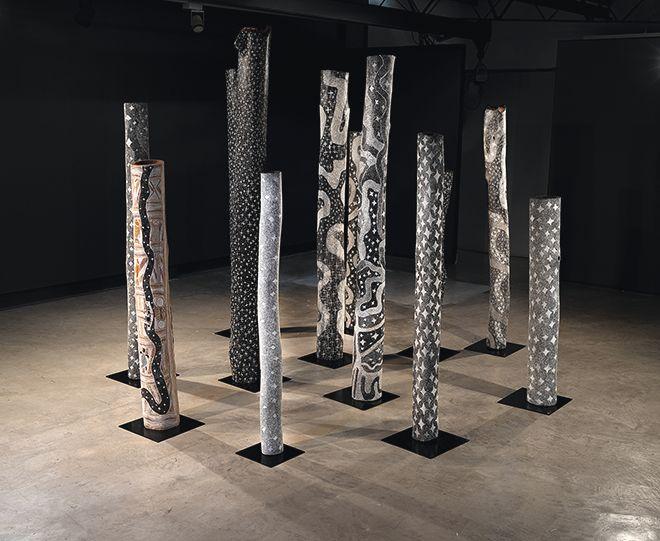For his first ever London show, the acclaimed Indigenous Australian artist Tony Albert is assuming the role of both artist and curator. Despite a practice spanning two decades and with a number of accolades to his name, including the recently announced Fondation Cartier First Nations Curatorial Fellowship, a London exhibition has “evaded my career”, Tony Albert tells The Art Newspaper from his Brisbane studio.
And for his first London outing he’s not going it alone. Conceived by Albert and co-curated with London-based Jenn Ellis, Story, Place presents the work of eight “Indigenous and diasporic artists” under the themes of land, ancestry and belief. Occupying the entirety of Frieze’s flagship bricks-and-mortar gallery at No.9 Cork Street and coinciding with Frieze London, Story, Place—a collaboration with Sullivan+Strumpf gallery, Indigenous community art centre Buku-Larrnggay Mulka Centre in Australia’s Northern Territory and Apsara Studio—asserts “indigenous perspectives of understanding”, Albert says. It also addresses colonialism, climate change and other “destructive elements which completely unite us globally at the moment”.

Story, Place is Tony Albert’s first London show
Rhett Hammerton, courtesy of Sullivan+Strumpf
The exhibition includes five other Australian artists: Naminapu Maymuru-White and Gunybi Ganambarr from the Northern Territory; Lindy Lee, a second-generation Chinese Australian from New South Wales; Los Angeles-based Palawa woman Jemima Wyman; and Samoan Australian Angela Tiatia from Brisbane. Their works will be shown alongside those by Shiraz Bayjoo, a Mauritian artist based in London, and Edgar Calel, a Mayan Kaqchikel from Guatemala.
“I didn’t want to just bring this group of Australian artists but to actually engage with the London community,” Albert says.
Australian arts revival
In Albert’s own work, also named Story, Place, audiences will encounter a sprawling installation composed largely of ‘Aboriginalia’, kitsch representations of Australia’s First Peoples once produced en masse for tourists, juxtaposed with text pieces. In a first, Albert has heavily intervened with these items, to “give voice to these objects”, he says.
Story, Place is the first international project supported by the newly formed government advisory body Creative Australia, which replaced the Australia Council in August. The change is part of a five-year plan to “revive Australia’s arts”, and is a centrepiece of a new National Cultural Policy (NCP). It is the first such policy in nearly three decades.
With an expanded remit, an additional A$50m in funding and objectives to prioritise First Nations artists, a diversity of voices and the contributions of all Australians to the arts, the NCP heralds the arts’ return as a government priority, and is an about face from the former prime minister Scott Morrison’s 2020 decision to scrap the arts ministry.
For Lee, who was recently appointed to the board of Creative Australia, policy is about leadership. “When I was growing up [Australia had] the White Australia policy,” Lee says, referring to the Immigration Restriction Act 1901, which was abolished in 1966 and was “devastating for the Asians of this country and those who were not white.
“So, if we have a cultural policy that can lead Australia to having a better, more expansive vision of ourselves, isn’t that a good thing?”, he asks.
- Story, Place, No. 9 Cork Street, until 21 October

























